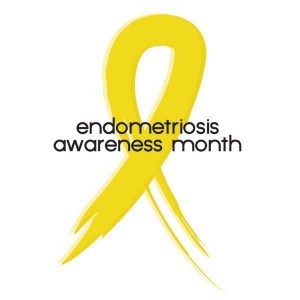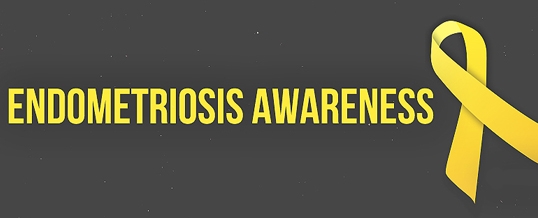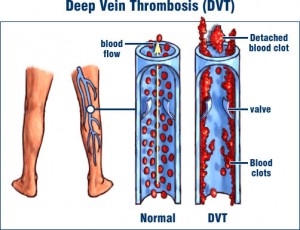Endometriosis Month on March, 2025: Endometriosis?
March, 2025 is Endometriosis Month 2025. Endometriosis sufferers A new research study for women with endometriosis. Learn more.

Medical name: Endometriosis
Number of women affected: At least 5.5 million women in North America alone have endometriosis.
Common symptoms: Very painful cramps or periods, heavy periods, chronic pelvic pain (which includes lower back pain and pelvic pain), intestinal pain, pain during or after sex, infertility.
Common treatments: Pain medication
Hormone therapy
Surgery—laparoscopy (pronounced lapp-are-ah-skoe-pee) or laparotomy (pronounced lapp-are-ah-toe-mee)
Does this disorder affect fertility/childbearing? About 30 percent to 40 percent of women with endometriosis are infertile, making it one of the top three causes for female infertility.
However, endometriosis-related infertility is often treated successfully using hormones and surgery.
Endometriosis is one of the most common gynecological diseases, affecting more than 5.5 million women in North America alone. The two most common symptoms of endometriosis are pain and infertility. Some women have pain before and during their periods, as well as during or after sex. This pain can be so intense that it affects a woman’s quality of life, from her relationships, to her day-to-day activities. Some women don’t have any symptoms from endometriosis. Others may not find out they have the disease until they have trouble getting pregnant
There are a number of treatments for both pain and infertility related to endometriosis.
First, let’s focus on the treatments for endometriosis pain. They include:
Pain medication—Works well if your pain or other symptoms are mild. These medications range from over-the-counter remedies to strong prescription drugs.
Hormone therapy—Is effective if your areas are small and/or you have minimal pain. Hormones can come in pill form, by shot or injection, or in a nasal spray. Common hormones used to treat endometriosis pain are progesterone, birth control pills, danocrine, and gonadatropin-releasing hormone (GnRH). Go to the next section, What are the hormone treatments for endometriosis pain? for more information.
Surgical treatment—Is usually the best choice if your endometriosis is extensive, or if you have more severe pain. Surgical treatments range from minor to major surgical procedures. Go to the What are the surgical treatments for endometriosis pain? section for more information about these options.
How can natural remedies help?
By treating the underlying cause of the endometriosis - namely a poorly functioning liver - Traditional Chinese Medicine has the potential to cure the condition and prevent future recurrence rather than just suppressing the symptoms and outcomes as is the case with conventional medicine.
The herbal ingredients used in traditional Oriental treatment of endometriosis work by fundamentally changing the functioning of the liver and female reproductive system. In order to do this, the treatment must be continued regularly for a regimen of several months and even longer if necessary in particularly stubborn cases. Medicinal herbs in general take longer than allopathic medicines to show their effectiveness but the patience and persistence required is usually worth the safer, superior and often permanent results achieved.
What is Endo-Ex Formula?
Endo-Ex is a safe and effective natural remedy for treating endometriosis. Containing herbs known for their liver strengthening and hormone-balancing properties in concentrated tincture form, Endo-Ex offers a healthy and potentially permanent solution to stubborn and painful endometriosis, without exacerbating the condition as is often the case with conventional treatment.
See Below To Purchase This Product
What are the ingredients of Endo-Ex?
This 100% natural remedy contains the following herbal and homeopathic ingredients:
Vitex agnus-castus is also known as Chasteberry and is a useful hormone-balancing herb. Recent studies have shown that compounds in Vitex are effective in adjusting female hormones that are out of balance and regulating menstruation. Vitex has also been proven to be effective in the treatment of endometriosis, PMS and dysmenorrhea (painful menstruation). Chasteberry helps the liver to process and excrete estrogen which is important for women with endometriosis as excess estrogen in the system has been linked to the development of this condition.
Angelica senensis (Don Quai) acts as a hormone balancer and is an indispensable herb for treatment of female reproductive disorders. A very highly regarded medicinal herb in Traditional Chinese Medicine, Don Quai acts as a tonic herb for the reproductive system and will address the overall health of your reproductive organs. It is especially useful in treatment of irregular periods, polycystic ovarian syndrome, estrogen dominance and endometriosis. Don Quai is also a well-known liver tonic and blood pressure regulator.
Silybum marianus (Milk Thistle) This herb has been used since ancient times for treating a wide variety of ailments, but is particularly effective in the treatment of liver problems. Studies suggest that this herb protects the liver from damage by viruses, pollution, stress and toxins. Milk Thistle is a potent antioxidant and laboratory studies indicate it may have useful anti-cancer properties.
Dioscorea villosa (Chinese Yam) is an excellent natural liver and nervous system tonic. It is also known to have anti-inflammatory and anti-spasmodic properties and will decrease menstrual pain as well as inflammation associated with endometriosis that leads to scar tissue.
Viburnum opulus (30C) is a homeopathic remedy known for its effectiveness in treating painful menstruation, especially backache.
Endo-Ex contains less than 1% pure pharmaceutical ethanol when diluted as directed. Like all Native Remedies products, Endo-Ex contains no artificial flavors or colors and is gluten free.
How has Endo-Ex helped other women?
"After having had endometriosis since my teens I was tired of the awful monthly pains and was not interested in using oral contraceptives as my doctor suggested because I want to get pregnant in the near future. I decided to try your Endo-Ex and it has really helped me. The dreadful pains every month have subsided considerably and these days I don’t feel completely useless and miserable when I get my period. I am confident that with continued treatment my problem will be completely cured." - Kerryn
"My husband and I have been trying to conceive for more than a year and it just wasn’t happening for us. After extensive testing I was told that I have endometriosis and this was why I was struggling to get pregnant. I went through two traumatic and expensive attempts at IVF before I decided to give the natural route a shot. After 6 months of using Endo-Ex I got pregnant. We were both flabbergasted and thrilled! I have Native Remedies to thank for this miracle and don’t think you will ever understand how grateful I am." - Andrea
"For the past few years I have been suffering from endometriosis. My periods were extremely heavy and sometimes lasted for as long as 10 days and my cramps were so painful that I couldn't even move. I would throw up and break into cold sweats and was unable to do anything. I started taking Endo-Ex 2 just 2 months ago and my periods are already becoming more normal. I no longer have the painful cramps, nausea, and cold sweats and even on the first month of taking Endo-Ex my period was only 7 days. I'm so greatful to Native Remedies and want to tell everyone out there just how great Endo-Ex works!" - Nicole, Illinois
Add Your Own Testimonial
How do I use Endo-Ex Formula?
Take 10 - 15 drops in 1/4 cup water three times daily. Continue for at least 6 months or longer should this be necessary.
Caution: Please consult your medical practitioner should symptoms persist. Safety during pregnancy and nursing is not yet established.
How long until I see results?
Improvement may be noted from the first menstrual period though it might take several cycles to see the full effectiveness of this natural remedy.
How long will a bottle last?
One 50 ml bottle will last approximately 30 days.
A 90 day supply is offered at a discount (see the Buy 2 Get 1 FREE special below).
Endo-Ex is manufactured according to the highest pharmaceutical standards. Individual ingredients are well-researched and are natural, safe and effective.
Endo-Ex is backed by our one year money-back guarantee so you can experience results risk-free
Hello there young lady, sorry to hear about ur diagnosis this is some info i found off the net, i tried to get a broad range of info including natural remedies, I hope this helps with some more understanding, It sounds as though it can be quite painful but isn't a life threatening illness which is good, and it seems to be extremely common even really young girls can get it soon after first mensturating.. I wish you well and take care of yourself, good luck i hope you dont suffer too much or at all, c u then.

endometriosis?
Endometriosis and Natural Progesterone
While the cause of endometriosis is unknown we do know that it is an estrogen driven disease. And the body's natural anti-estrogen is progesterone.
Controlling the Symptoms of Endometriosis with Progesterone
We know that when a woman falls pregnant, often endometriosis will disappear, only to return again after pregnancy. There is some very strong correlation between the two. This suggests that the sex hormones are involved and that high progesterone levels produced in pregnancy play an important part in controlling this disease.
That's why progesterone is recommended from days 8 to 26 (just before menstruation) or whenever your normal menstrual cycle ends, breaking from cream briefly to refresh receptor sites. This mimics a pseudo-pregnancy state, and facilitates healing.
Higher than normal doses are required which appear to be well tolerated. Levels around about 60~80mg/day are usually required for pain management. You know you are taking too high a dose if you begin to feel sleepy after applying cream.
Most women will find that they can reduce their dosage of progesterone after 7-12 months, however, attempts to go below 40mg/day progesterone often allows symptoms to creep back in.
Keep in mind that a delayed diagnosis of endometriosis after numerous years of medication and synthetic hormone cocktails often leads to liver dysfunction, adrenal exhaustion, and chronic pain / fatigue which can compromise the uptake of progesterone.
No one is suggesting progesterone cures endometriosis but we certainly know, based on empirical evidence, that it appears to play a major role in controlling its distressing symptoms. We know that women who stopped progesterone felt great for a few months and then suddenly, after progesterone stores had washed from the body, the disease would flare back up.
Most women with endometriosis remain on progesterone cream for maintenance and pain control, and adjust their dose when necessary, increasing when indicated such as in times of stress.
Catherine Rollins
If you need more info...please e-mail or visit....
www.health.groups.yahoo.com/group/LiveAgain
Michelle Jones

endometriosis?
In endometriosis the tissue that lines the uterus is found on the outside of the uterusNormally, the endometrium is shed each month during the menstrual cycle; however, in endometriosis, the misplaced endometrium is usually unable to exit the body. The endometriotic tissues still detach and bleed, but the result is far different: internal bleeding, degenerated blood and tissue shedding, inflammation of the surrounding areas, pain, and formation of scar tissue may result. In addition, depending on the location of the growths, interference with the normal function of the bowel, bladder, small intestines and other organs within the pelvic cavity can occur.
Symptoms of endometriosis can include (but are not limited to):
Painful, sometimes disabling menstrual cramps (dysmenorrhea); pain may get worse over time (progressive pain)
Chronic pain (typically lower back pain and pelvic pain, also abdominal)
Painful sex (dyspareunia)
Painful bowel movements or painful urination (dysuria)
Heavy menstrual periods (menorrhagia)
Nausea and vomiting
Premenstrual or intermenstrual spotting (bleeding between periods)
Infertility and subfertility. Endometriosis may lead to fallopian tube obstruction. Even without this, there may be difficulty conceiving. In some women, subfertility is the sole symptom, and the endometriosis is only discovered after fertility investigations











